Malvino is talking about a common-emitter circuit that amplifies voltage; that is not a power amplifier.
This is different from an emitter-follower which doesn't amplify voltage. A class B output stage of a power amplifier is based a pair of complementary emitter followers.
An emitter-follower is fairly linear because it reproduces the input voltage without gain. The output voltage is linked to the input directly via a voltage drop across the device.
If we imagine a single-ended emitter follower, there is a voltage \$V_o\$ at the top of the load. The input voltage is \$V_i\$ appears at the transistor base. The difference between them is just\$V_{\text BE}\$: the approx. \$0.7V\$ drop from base to emitter. That stays more or less the same across the voltage swing.
That's not the reason why an entire power amp device is linear, of course. What we call a power amp is a device made up of at least three circuits (according to one possible model, the Lin architecture): a differential input stage, a voltage amplification stage and an output stage. The first two stages have a massive open-loop voltage gain; too large to be practical (in the hundreds of thousands!). The loop is closed by connecting a global negative feedback from the output to the differential input. The closed-loop gain is massively reduced compared to the open-loop gain, and attributes like linearity and frequency response improve by the same factor.
The inherent non-linearity of the power amp is largely in its differential input stage and VAS because, as noted above, the output stage just follows the voltage coming from the VAS.
The output stage certainly has non-linarities, and in particular the B arrangement that involves two transistors switching on and off alternatively has crossover distortion: an outright discontinuity. As we vary the voltage applied to the class B output stage from positive to negative or vice versa, one transistor has to turn off and the other turn on. There will be a "dead spot" in the middle where we are between \$-0.7V\$ and \$0.7V\$ when both devices cut off.
The global negative feedback is so effective, it all but eliminates even this crossover distortion, not just the nonlinearities in the VAS.

